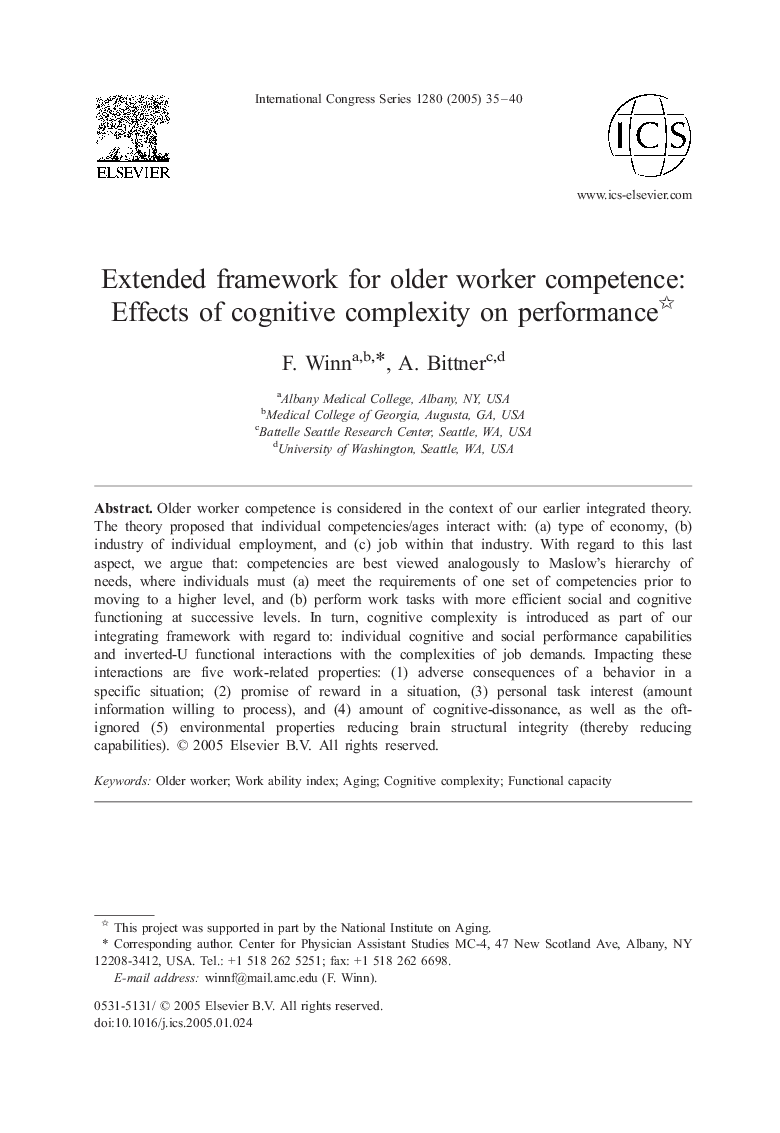| Article ID | Journal | Published Year | Pages | File Type |
|---|---|---|---|---|
| 9021213 | International Congress Series | 2005 | 6 Pages |
Abstract
Older worker competence is considered in the context of our earlier integrated theory. The theory proposed that individual competencies/ages interact with: (a) type of economy, (b) industry of individual employment, and (c) job within that industry. With regard to this last aspect, we argue that: competencies are best viewed analogously to Maslow's hierarchy of needs, where individuals must (a) meet the requirements of one set of competencies prior to moving to a higher level, and (b) perform work tasks with more efficient social and cognitive functioning at successive levels. In turn, cognitive complexity is introduced as part of our integrating framework with regard to: individual cognitive and social performance capabilities and inverted-U functional interactions with the complexities of job demands. Impacting these interactions are five work-related properties: (1) adverse consequences of a behavior in a specific situation; (2) promise of reward in a situation, (3) personal task interest (amount information willing to process), and (4) amount of cognitive-dissonance, as well as the oft-ignored (5) environmental properties reducing brain structural integrity (thereby reducing capabilities).
Related Topics
Life Sciences
Biochemistry, Genetics and Molecular Biology
Molecular Biology
Authors
F. Winn, A. Bittner,
